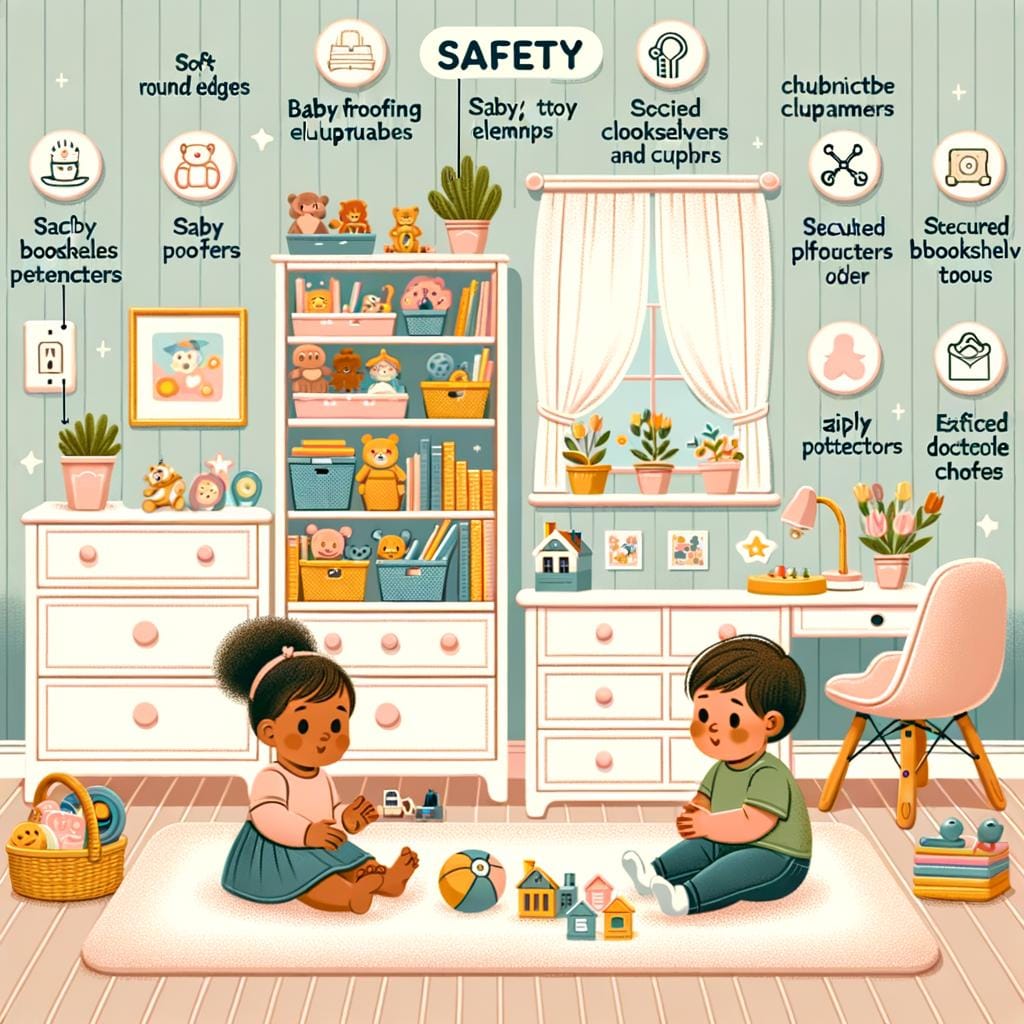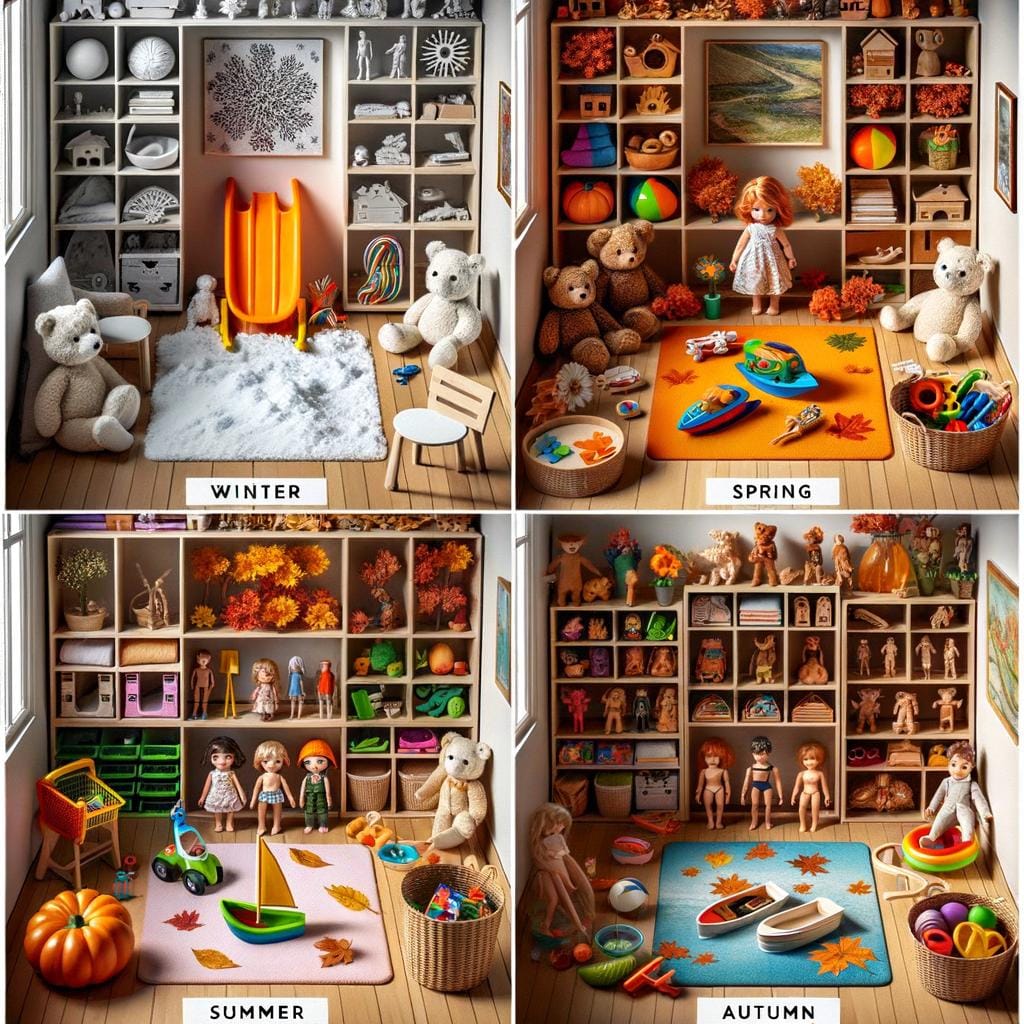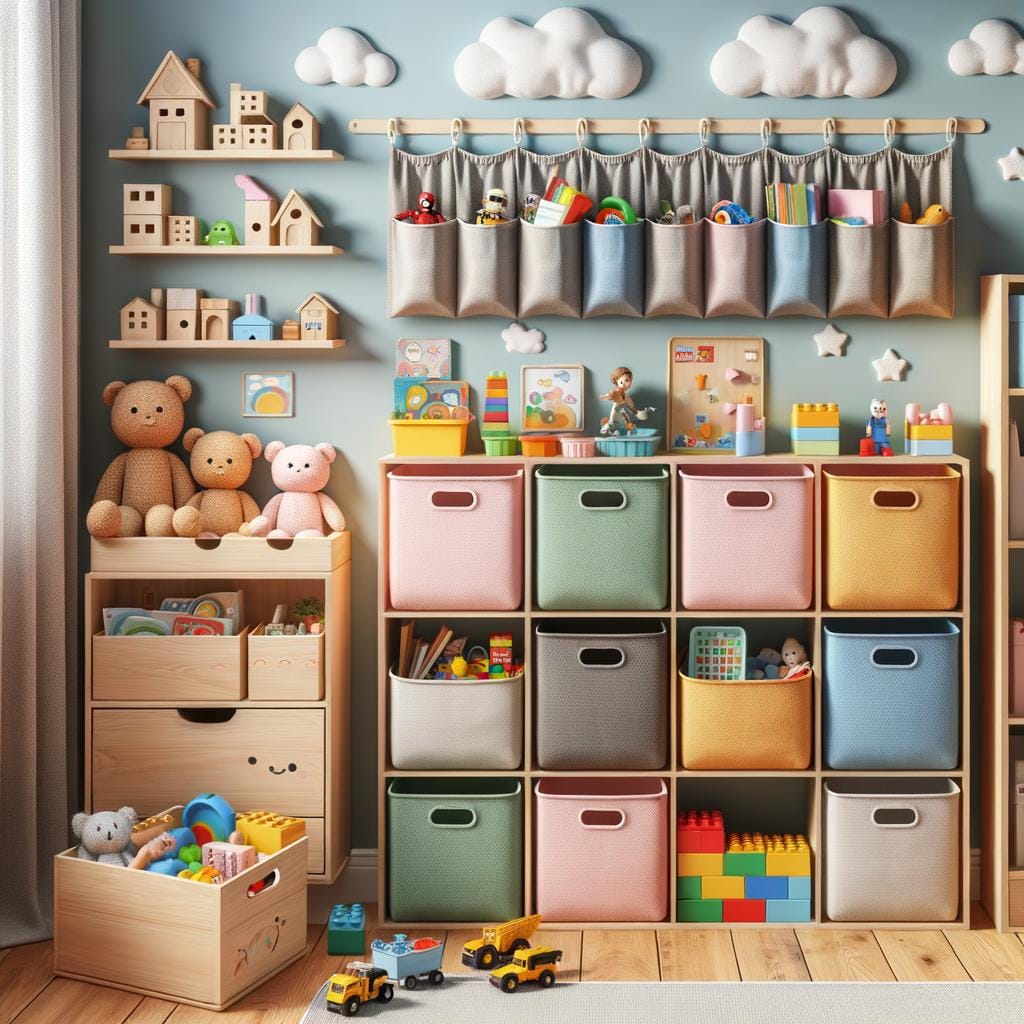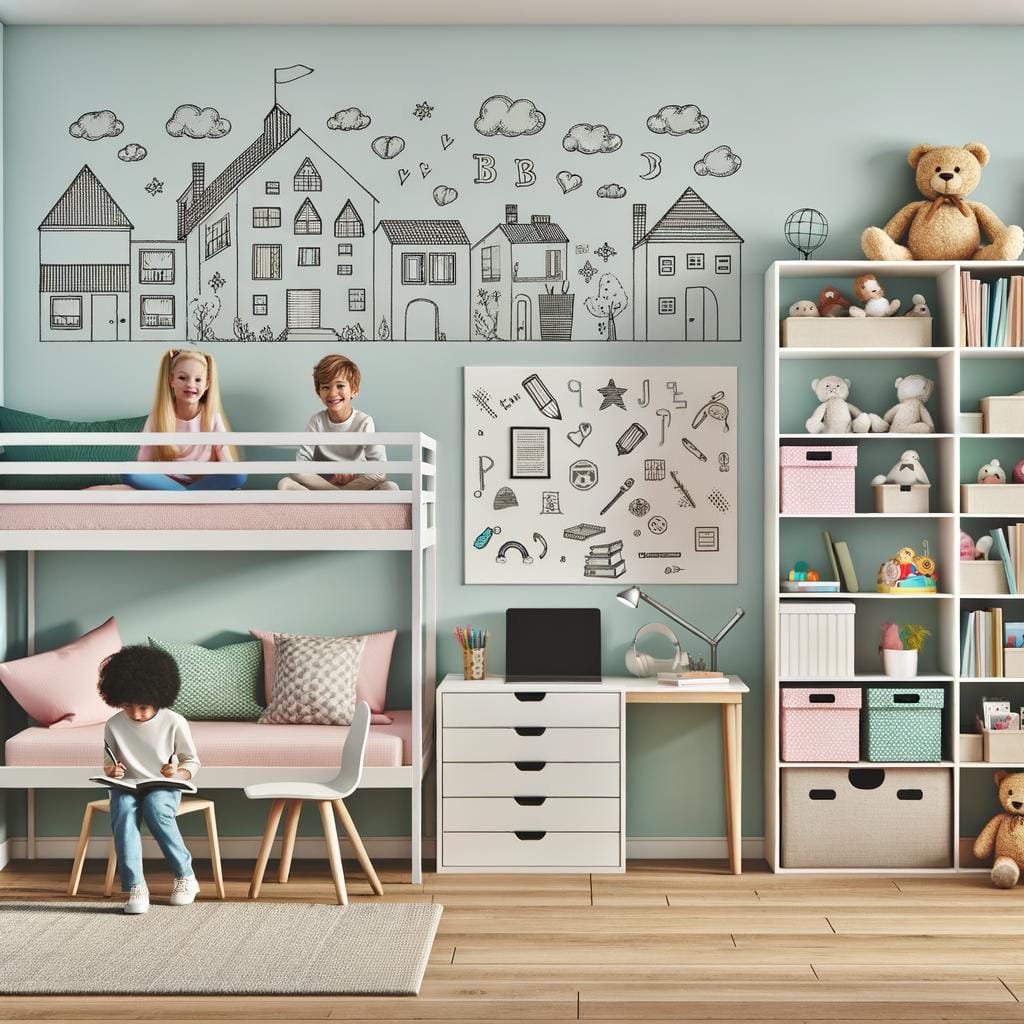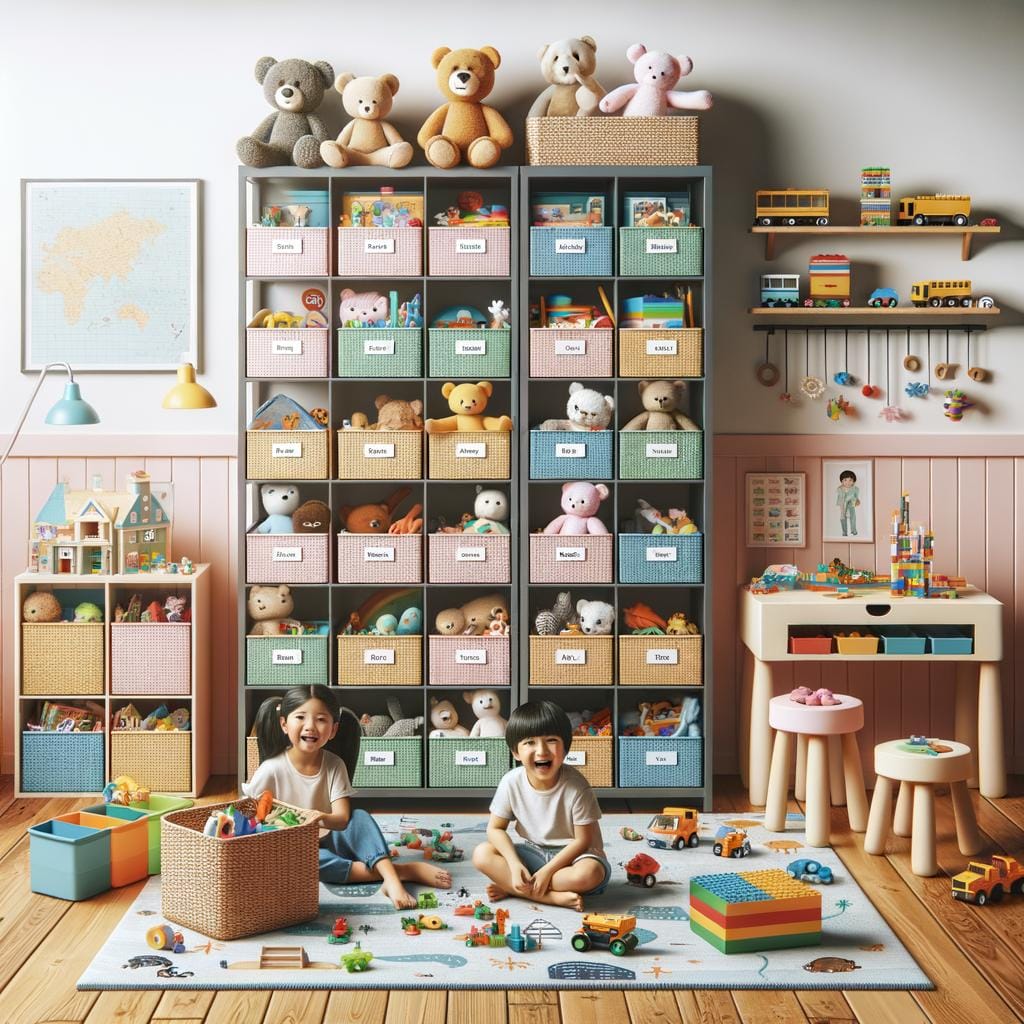Safety in kids’ room organization is a top priority for parents and caregivers, as creating a safe environment for children to play, sleep, and learn is essential. An unsafe kids’ room can pose various risks and concerns, from furniture tip-overs to tripping hazards from poorly organized toys. Ensuring that every aspect of a child’s room is designed with safety in mind is crucial in preventing accidents and injuries.
When it comes to choosing furniture for a kids’ room, it is important to select pieces that meet safety standards and are sturdy enough to withstand active play. Anchor straps should be used to secure heavy furniture like dressers and bookshelves to the wall to prevent them from tipping over. Additionally, ensuring that there are no sharp edges or small parts that could pose a choking hazard is essential.
Organizing toys in a way that minimizes tripping hazards and prevents choking incidents is key to maintaining a safe kids’ room. Proper storage solutions like bins, baskets, and shelves can help keep toys off the floor while also making it easier for children to access and clean up their belongings. By implementing these strategies, caregivers can create a space that promotes both safety and independence for children in their own rooms.
Choosing Safe Furniture
When it comes to ensuring safety in kids’ room organization, choosing safe furniture is a critical aspect. Parents or caregivers should prioritize selecting furniture that meets safety standards to prevent accidents and injuries. Look for furniture pieces with rounded corners to avoid sharp edges that could potentially harm children during playtime. Additionally, ensure that the furniture is sturdy and stable to prevent tipping over, especially if there are climbing opportunities.
One essential tip when choosing safe furniture is to use anchor straps for heavy pieces like dressers, bookshelves, or cabinets. Securing these items to the wall can prevent them from toppling over if a child tries to climb on them or accidentally pulls on them while reaching for something. Anchor straps are relatively easy to install and can significantly enhance the overall safety of the room.
In terms of creating a safe environment in a child’s room, parents should also consider the materials used in furniture construction. Opt for non-toxic paints and finishes to minimize chemical exposure. Additionally, check for any recalls on furniture items to ensure that they have not been deemed unsafe by regulatory bodies. Ultimately, investing in well-made, durable, and safe furniture pieces is crucial for maintaining safety in kids’ room organization.
| Safe Furniture Criteria | Importance |
|---|---|
| Rounded corners and edges | Minimize injury risks during playtime |
| Sturdy and stable construction | Prevent tipping over accidents |
| Use of anchor straps for heavy furniture | Enhanced stability and security against tip-overs |
Toy Organization for Safety
When it comes to organizing a kids’ room, one of the most important factors to consider is toy organization for safety. Toys scattered on the floor can create tripping hazards, leading to potential injuries for curious little ones. To prevent accidents, it is essential to implement strategies that keep toys organized and out of harm’s way.
One effective tip is to designate specific storage areas for different types of toys, such as bins for small toys and shelves for larger items. By assigning a proper place for each toy, children are more likely to clean up after themselves and reduce the risk of accidents.
In addition to preventing tripping hazards, it is crucial to consider choking hazards when organizing toys in a kids’ room. Small toy parts or pieces that can easily be swallowed pose a significant safety risk for young children. Parents should regularly inspect toys for any loose parts or broken pieces and remove them from play areas immediately.
Utilizing proper storage solutions such as toy chests with safety hinges or bins with secure lids can help minimize the risk of choking incidents. By taking simple yet effective measures in toy organization, parents can ensure a safer environment for their children to play and explore.
Furthermore, involving children in the organization process can teach them valuable lessons about tidiness and responsibility while promoting safety in their room. Encouraging kids to participate in cleaning up toys after playtime not only fosters good habits but also allows them to understand the importance of safe organization practices.
Parents can make organization fun by turning it into a game or challenge, creating a positive association with tidying up their space. By instilling these habits early on, children learn the importance of safety in kids’ room organization and carry these skills into adolescence and adulthood.
Electrical Safety Measures
Importance of Outlet Covers and Cord Organizers
When it comes to ensuring the safety of kids in their rooms, electrical safety measures are crucial. One of the first steps to take is to install outlet covers on all unused electrical outlets to prevent children from sticking objects into them.
Outlet covers come in various designs, including ones that automatically slide shut when a plug is removed, providing an added layer of protection. Additionally, cord organizers can help keep electrical cords neatly tucked away and out of reach, reducing the risk of tripping or pulling on appliances.
Tips for Safely Securing Cords and Wires
In a child’s room, there are often many electronic devices with cords that can pose a safety hazard if not properly secured. To prevent accidents, consider using cord clips or cable ties to keep cords organized and out of the way.
It’s also recommended to avoid running cords under rugs or furniture where they can become damaged or present a trip hazard. Make sure any power strips or extension cords are placed in safe locations where they won’t be stepped on or pulled by curious little hands.
Ensuring Overall Electrical Safety
Apart from outlet covers and cord organization, it’s essential to regularly check electrical appliances for any frayed wires or damage that could lead to electric shock or fire hazards. Encourage kids to notify adults if they notice any issues with electronics in their room.
Finally, teaching children about electrical safety early on can help instill good habits and awareness when it comes to handling electronics responsibly. By taking these precautions and educating children about electricity risks, you can significantly contribute to the overall safety of their room environment.
Window Safety
When it comes to ensuring a safe kids’ room, window safety is a crucial aspect that should not be overlooked. Windows can pose various hazards to children if proper precautions are not taken. One of the primary concerns is window blind cord safety, as these cords can present a strangulation risk to young children. It is essential to secure window blind cords away from children’s reach or opt for cordless blinds to eliminate this risk completely.
In addition to addressing window blind cord safety, it is also important to consider installing window locks and guards in the kids’ room. Window locks prevent windows from being opened wide enough for a child to climb out, reducing the risk of falls.
Window guards provide an added layer of protection by creating a barrier that prevents children from accidentally falling out of an open window. These safety measures are simple yet effective ways to enhance the overall safety of the kids’ room.
Importance of Window Locks and Guards
Window locks and guards play a crucial role in preventing accidents involving windows in a kids’ room. By installing these safety devices, parents can have peace of mind knowing that their children are protected from potential falls or other incidents related to windows.
It is recommended to install window locks that limit how far windows can be opened and sturdy guards that provide a physical barrier against falls. Regularly check these safety features to ensure they are functioning correctly and make any necessary repairs or replacements as needed.
Regular Maintenance and Supervision
Aside from installing window locks and guards, regular maintenance and supervision are equally important in ensuring window safety in a kids’ room. Inspect windows periodically for any signs of wear or damage that may compromise their effectiveness as a safety measure.
Additionally, supervise young children whenever they are in the room with open windows, especially on higher floors where the risk of falling is greater. By practicing these precautions consistently, parents can create a safer environment for their children in the home.
Creating a Safe Sleep Environment
When it comes to creating a safe sleep environment for children, there are several important factors to consider. One key aspect is ensuring that the crib is positioned away from any windows, curtains, or blinds. This helps to prevent the risk of entanglement in window cords or the potential hazard of falling objects. Additionally, it is crucial to choose bedding that fits snugly on the mattress to reduce the risk of suffocation.
Another important component of a safe sleep environment is the use of night lights and smoke alarms. Night lights can provide a sense of comfort for children while also helping parents easily check on them during the night. Smoke alarms are essential for alerting everyone in the house in case of a fire, ensuring a quick response and evacuation if necessary.
In addition to setting up a safe sleep space, it’s vital to regularly check all equipment for wear and tear, such as loose screws or broken slats on the crib. By maintaining a secure sleeping area free from potential hazards, parents can have peace of mind knowing their children are sleeping safely and soundly at night.
Chemicals and Toxins
When it comes to ensuring the safety in kids’ room organization, one crucial aspect to consider is the presence of chemicals and toxins within the space. Children are naturally curious and may inadvertently come into contact with harmful substances if proper precautions are not taken. To mitigate this risk, parents and caregivers must be diligent in identifying common household products that can pose a danger to their little ones.
To create a safer environment for children, it is essential to securely store potentially harmful items such as cleaning supplies, medications, and personal care products. Utilizing childproof locks on cabinets and drawers where these items are kept can prevent accidental ingestion or exposure. Additionally, storing these substances in high or locked cabinets out of reach of children is key in minimizing the risk of ingestion or spillage.
In addition to safely storing chemicals and toxins, it is also important to educate children about the potential dangers associated with these substances. Teaching kids about hazardous household products and explaining why they should not touch or play with them can help instill a sense of caution. By combining proper storage practices with education, parents can significantly reduce the chances of accidental poisoning or exposure in their kids’ rooms.
- Securely store cleaning supplies, medications, and personal care products
- Utilize childproof locks on cabinets and drawers
- Educate children about potentially harmful substances
Organization Tips for Kids’ Room Safety
When it comes to ensuring safety in kids’ room organization, implementing effective organizing strategies is crucial. Keeping the room clutter-free not only promotes a clean and tidy environment but also helps prevent accidents and injuries. One key tip for maintaining a safe kids’ room is to designate specific areas for different types of items, such as toys, clothing, and school supplies. Utilizing storage bins, shelves, and drawers can help keep items organized and out of harm’s way.
Another important aspect of organization tips for kids’ room safety is to regularly declutter and remove items that are no longer needed or age-appropriate. This not only prevents overcrowding but also reduces the risk of trips and falls. Involving kids in the organization process can be educational and fun while teaching them valuable skills in tidying up their space responsibly.
Moreover, it is essential to regularly inspect furniture for any signs of wear or damage that could pose a safety hazard. Ensuring that furniture is stable and securely anchored to the wall can prevent tipping incidents. Additionally, avoiding sharp corners or edges on furniture pieces can reduce the risk of injuries during playtime. By following these organization tips for kids’ room safety, parents can create a secure environment where children can thrive and play without worry.
| Organizing Strategies | Safety Benefit |
|---|---|
| Designate specific areas for different items | Prevents accidents and injuries by keeping items organized |
| Regularly declutter and remove unnecessary items | Reduces overcrowding and minimizes the risk of trips |
| Inspect furniture for wear or damage | Ensures stability and prevents tipping incidents |
Conclusion
In conclusion, maintaining safety in kids’ room organization is crucial for creating a secure and healthy environment for children to thrive in. By following the tips outlined in this article, parents can significantly reduce the risks and concerns associated with an unsafe kids’ room. From choosing safe furniture with anchor straps to organizing toys to prevent tripping and choking hazards, every step taken towards ensuring safety contributes to the overall well-being of children.
Implementing electrical safety measures such as outlet covers, cord organizers, and securely securing cords and wires in a kids’ room is essential to minimize potential accidents. Window safety should also be a top priority, with the installation of window locks and guards along with careful consideration of window blind cord safety. These precautions help prevent falls and other injuries that can occur in a child’s bedroom.
Furthermore, creating a safe sleep environment by following guidelines for crib positioning, bedding, night lights, and smoke alarms can give parents peace of mind knowing their child is sleeping safely. Additionally, being mindful of chemicals and toxins in the room by safely storing cleaning supplies and medications away from curious hands is crucial for preventing accidental poisoning.
By incorporating these organization tips tailored for kids’ room safety and involving children in the process, parents can ensure a secure environment where their little ones can play, sleep, and grow without unnecessary risks.
Frequently Asked Questions
How Can I Make My Child’s Room Safe?
Making your child’s room safe involves several key steps. Firstly, ensure that all furniture is securely anchored to the wall to prevent tipping. Use outlet covers and cord organizers to keep electrical hazards at bay.
Install safety gates at the doorway of the room and window guards if necessary. Remove any small objects that could pose a choking hazard and make sure that heavy items are stored on lower shelves.
How Do You Organize a Child’s Room?
Organizing a child’s room can be a fun project that also teaches your child valuable skills in tidying up. Start by decluttering the space and donating or storing toys that are no longer used. Utilize storage bins, shelves, and baskets to keep toys organized and easy to find.
Labeling containers can help your child know where things belong, making cleanup time easier. Consider rotating toys periodically to keep things fresh and exciting.
How Can I Make My Toddler Room Safe?
Creating a safe environment for your toddler is essential for their well-being. Begin by childproofing the room with outlet covers, door handle locks, and safety latches on drawers and cabinets. Ensure that furniture is stable and not easily tipped over.
Use corner guards on sharp edges of furniture to prevent injuries during playtime. Keep small objects out of reach, including those that could be potential choking hazards. Regularly inspect toys for any loose parts or damage that could cause harm to your toddler.

Hello, I’m April Denton, your go-to expert for all things home decluttering and organization. With over a decade of experience helping individuals transform their living spaces into serene, clutter-free sanctuaries, I am passionate about the life-changing benefits of decluttering. My journey into the world of organization began out of necessity, juggling a busy career and a bustling household. I quickly realized that a well-organized home was the key to a more balanced, stress-free life.

